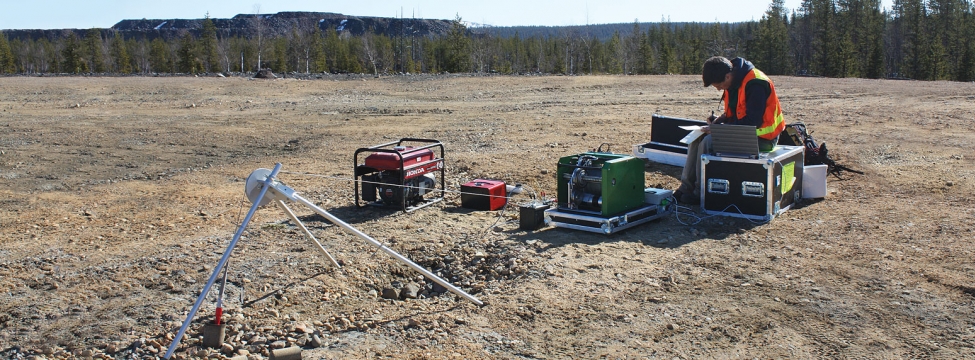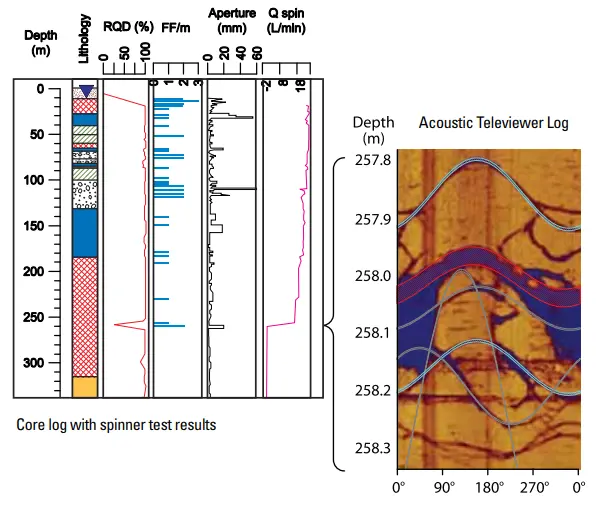In hard rock mining environments, groundwater flow along fractures dominates. In order to understand the nature of fractures, and particularly those that are continuous and inter-connected within a wider fracture network, SRK employs specialist field investigation techniques. The opportunity to design and undertake such investigations within an integrated program of geotechnical and hydrogeological investigation can yield enhanced results. The collaboration enables a more comprehensive assessment of the groundwater regime around mines and specifically for open pits, pit slope stability.
For an open pit feasibility study in northern Sweden, SRK designed such an integrated study with the objective of understanding variations in horizontal hydraulic conductivity (Kz) with depth in the planned pit wall areas. Diamond-cored boreholes enabled the geological sequence – in this case fractured granitoids, diorites, phyllites, schists and skarns – to be accurately logged. The oriented core was logged geotechnically, for properties including Rock Quality Designation (RQD) and fracture frequency (FF).
The drillers were instructed to notify SRK’s supervising hydrogeologist of any significant increase in penetration rate and any loss of drilling fluids during drilling. Such events indicate potential fracturing in the rock. In the example shown, evidence of fracturing occurred between 258m and 262m below ground level. A downhole acoustic televiewer (ATV) survey provided further detail of fracture characteristics, including fracture aperture at the borehole face.
When the drilling was completed, SRK used a downhole impeller flow-logging technique, known as “spinner” testing, to accurately assess the variation of hydraulic conductivity with depth through the sequence. The testing takes place under pumped conditions, using a portable submersible pump to quantify the induced flow (Qspin in L/min) from fractures down the hole.
In this case, more than 70% of the total flow was derived from a depth of 258m, corresponding to the main fracture zone. This, and other, flow horizons identified during the logging were then converted to a discrete measure of the fracture’s permeability, using the total transmissivity (T) of the rock mass penetrated by the borehole.
The integrated study enabled SRK to evaluate the fracture characteristics of the rock mass accurately. Further, this approach led to the clear identification of an open fracture zone as the conduit for the majority of groundwater flow in the sequence. The application of these techniques enabled an improved understanding of the conceptual hydrogeological model and a more accurate prediction of pit inflows.


